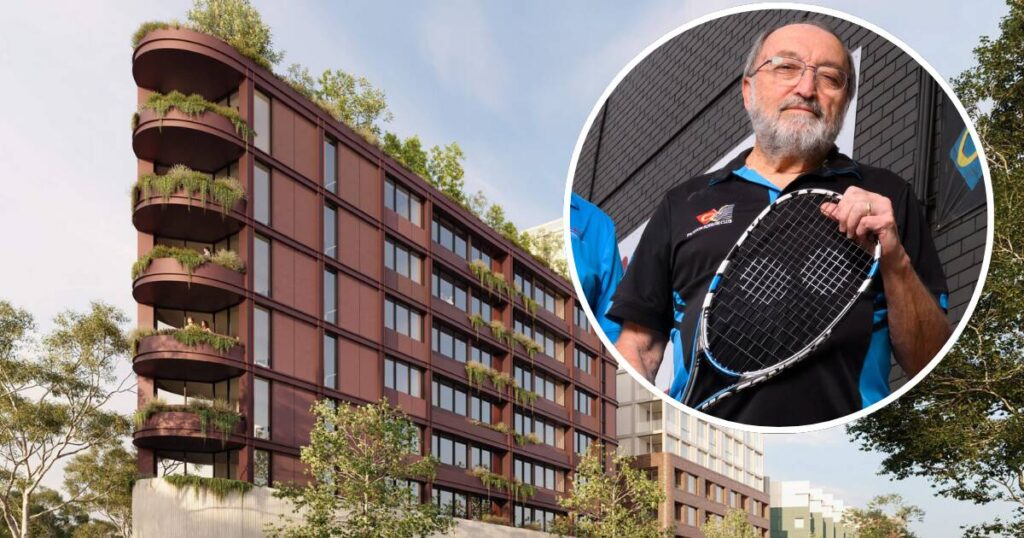
Dickson residents are currently grappling with the implications of a proposed mega development that promises to bring hundreds of new residents and increased traffic to their area. The development application, lodged recently, has sparked a mix of reactions from the community.
The inner north community has been aware of the impending transformation of the Dickson Tradies club for nearly a decade. However, the submission of the stage one development application has intensified discussions and concerns. Among the buildings slated for demolition is the Dickson Squash Club, a local institution that has been in operation for over 55 years.
In October 2024, the squash club was informed that its courts were not included in the redevelopment plans, with a potential closure looming within twelve months. This timeline has since been extended by approximately another year, providing a temporary reprieve for the club and its patrons.
Community Reactions and Concerns
Spearheading the opposition to the closure is Dick O’Rourke, a long-time figure at the squash club and owner of a nearby racquet pro shop. O’Rourke is actively petitioning local Members of the Legislative Assembly (MLAs) to intervene.
O’Rourke has engaged with Minister for Homes, Sport and Recreation Yvette Berry and staff from Planning Minister Chris Steel’s office. He has also reached out to Liberal MLA Peter Cain, who has shown interest in the club’s plight.
“We’ve been here since 1968, so our history goes back a long way. The centre has a long history and it’s still a very vibrant community,” O’Rourke stated. “Tonight, there will be 50 people here for a competition. If they shut us down, where will all those people go?”
O’Rourke mentioned that while there have been discussions about relocating the club to another upcoming Canberra development, the financial implications are prohibitive. The only other viable option, Next Gen gym in Lyneham, does not have sufficient court availability to accommodate the club’s competitions.
Broader Community Implications
For other community groups, the scale and impact of the development are still under scrutiny. Gene McGlynn, acting president of the Dickson Residents Association, indicated that the group is still evaluating the stage one application and has yet to form a definitive stance.
“We have had some conversations [with the Tradies] and the application is broadly what we expected. It’s a little bit bigger than we thought, but there’s nothing substantially different to what we expected,” McGlynn noted.
Parking remains a significant concern, as the number of available spaces is expected to decrease during construction. Although some public parking will be incorporated into the redevelopment, it is unlikely to match the current capacity of the existing above-ground carpark.
“It’s not a secret we are concerned about it, especially given there will be a lot more shops and more people,” McGlynn added.
Adding to the complexity, an upgrade to Dickson Shops, located across from the Tradies site, is anticipated to commence in 2026. The timing of these concurrent developments is a point of concern for the residents’ group.
Political and Environmental Perspectives
ACT Green leader Shane Rattenbury has weighed in on the development, expressing support for the project as a model for sustainable urban infill.
“This is exactly the kind of site for infill projects the Greens have been pushing for. More homes near shops, transport, and community life,” Rattenbury posted on Facebook. “We need to push hard to ensure this actually delivers truly affordable housing, green design, and real community benefit, rather than a low community value, profit-driven project.”
The development represents a significant shift in urban planning for the area, reflecting broader trends towards increased densification and mixed-use developments in urban centers. This approach aims to address housing shortages while promoting sustainable living practices.
Looking Ahead
As the community continues to debate the merits and drawbacks of the proposed development, stakeholders from all sides are preparing for further discussions and negotiations. The outcome of these deliberations will likely shape the future landscape of Dickson and set a precedent for similar projects in Canberra.
The next steps involve ongoing community consultations, potential revisions to the development plans, and continued advocacy from local groups and political figures. The unfolding situation underscores the challenges of balancing growth and community needs in rapidly evolving urban environments.





